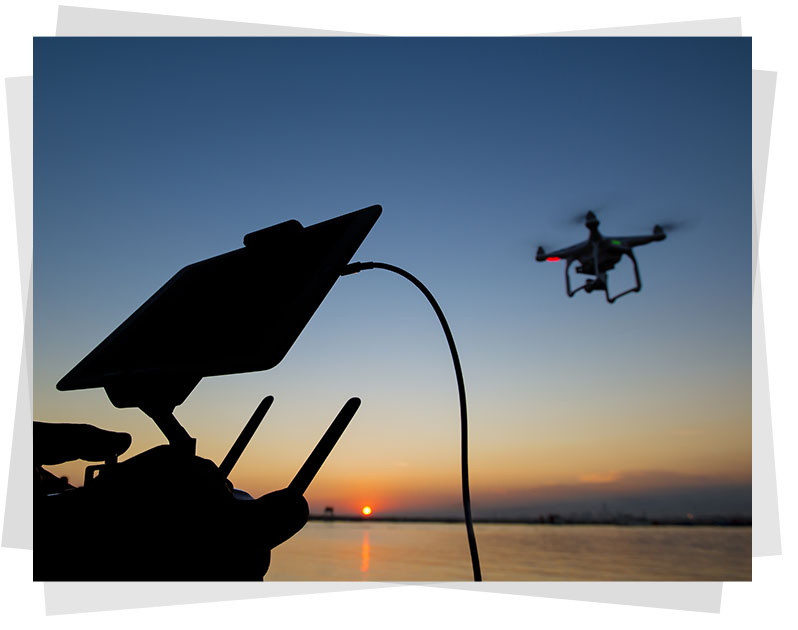VOL. 64 April 2021
ETRI Develops First Mobile
Radio Direction-Finding Antenna
- New technology allows for vehicle mobility and high-precision detection by adjusting the distance between antennas
- To compete with global leaders with the new technology applicable to national defense,
aviation, disaster relief and rescue operations

A team of Korean researchers have developed a new technology that allows users to detect the source of radio wave accurately by adjusting the antenna while they are moving around. The new technology can help detect illegal use of radio wave and eliminate blind spots, which is expected to help create a more orderly environment for radio wave users.
ETRI announced on March 25 that it has developed “the world’s first antenna-adjusting technology for mobile radio wave direction finding”that makes it possible for users to identify the source of radio wave accurately while they are moving.
In order to find the direction of interfering wave source, users first use a fixed device to identify the potential area and a vehicle with a mobile antenna approaches the area to pinpoint the exact location. The mobile antenna can find wave signals that come from different wave bands. It consists of a high-band1) antenna and a low-band2) antenna and it is installed on top of the roof of the vehicle.
1) 900~8000㎒
2) 20~900㎒
Antenna Specifications
| Folded Size | Standard |
|---|---|
| Frequency | 20Hz ~ 8 GHz |
| Size (Diameter x Height) | 800(D)x446.5(H) mm |
| Weight | 22.5kg |
If the antenna is installed too high, it may impede the maneuvering of the vehicle. Previously, antennas were set up in such a way that the distance between them was fixed in order to minimize the height. However, the distance was not long enough to avoid interference from the other antenna, resulting in unsatisfactory direction-finding performance.
To address this issue, the research team developed the multi-layer antenna technology that allows users to adjust the distance between the high-band antenna and the low-band antenna. A user who is not moving or driving a vehicle at a slow speed can adjust the distance wider so as to be able to increase the direction-finding precision while narrowing the distance to accommodate the driving speed when the vehicle is moving fast.
The next-generation mobile direction-finding system includes an array antenna, a multi-channel receiver, and the software. The application of this technology can double the accuracy level compared to fixed antennas. For example, if the existing direction-finding devices can find a radio signal within the range of 2°, the range can be narrowed down to 1°with ETRI’s new technology; thus significantly improving accuracy3)
3) The results are based on the test performed in an anechoic environment that is free of interference and other variables.


ETRI’s new technology can keep the height of the vehicle at 2.5m or lower, allowing for easier vehicle maneuvering, which makes it easier to locate the source of wave wherever you go. The direction-finding scope can be as wide as two-digit kilometers, although the performance can vary according to the wave band and wave environment. The new device is smaller in size and no additional gadgets are needed; thus making it commercially more viable.
The new technology is expected to help meet the needs of the private sector and the national defense system, which need to find sources of wave in national wave management, rescue and disaster-relief operations involving vehicles and airplanes and even under circumstances wherein GPS is intentionally interrupted.
In particular, the technology, which outperforms that of leading global developers, is viewed as an essential core technology in wave detection for related organizations including Central Radio Management Service, Korea Airports Corporation, defense-related organizations and radio management institutions in other countries.

Once this technology is transferred to domestic radio-finding organizations and defense industry, localization and domestic production will pick up speed, with the technology eventually able to compete in the global market.
“Currently, the global radio direction finder market is dominated by a handful of industry leaders. In this sense, securing a core technology for next-generation mobile direction finding that can help create a clean radio environment has a special meaning." said Sooho Sohn, a principal researcher of ETRI's Radio Environment & Monitoring Research Section.
The team is planning to follow up on the research to develop drone-based radio finder technologies and increase the accuracy and scope of direction-finding performance further.
This project was sponsored by the “Radio Monitoring Research Division” of the Ministry of Science and ICT.

